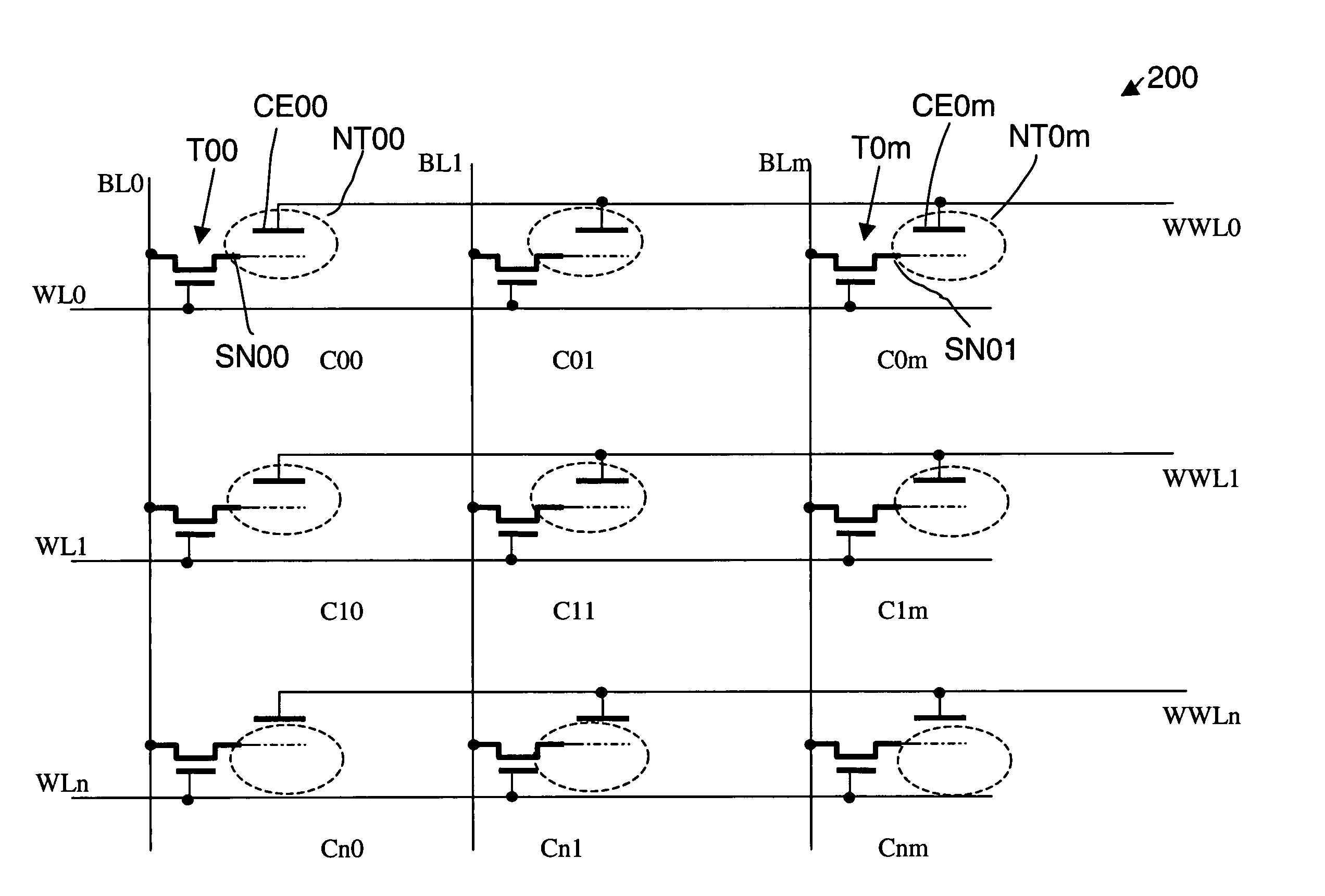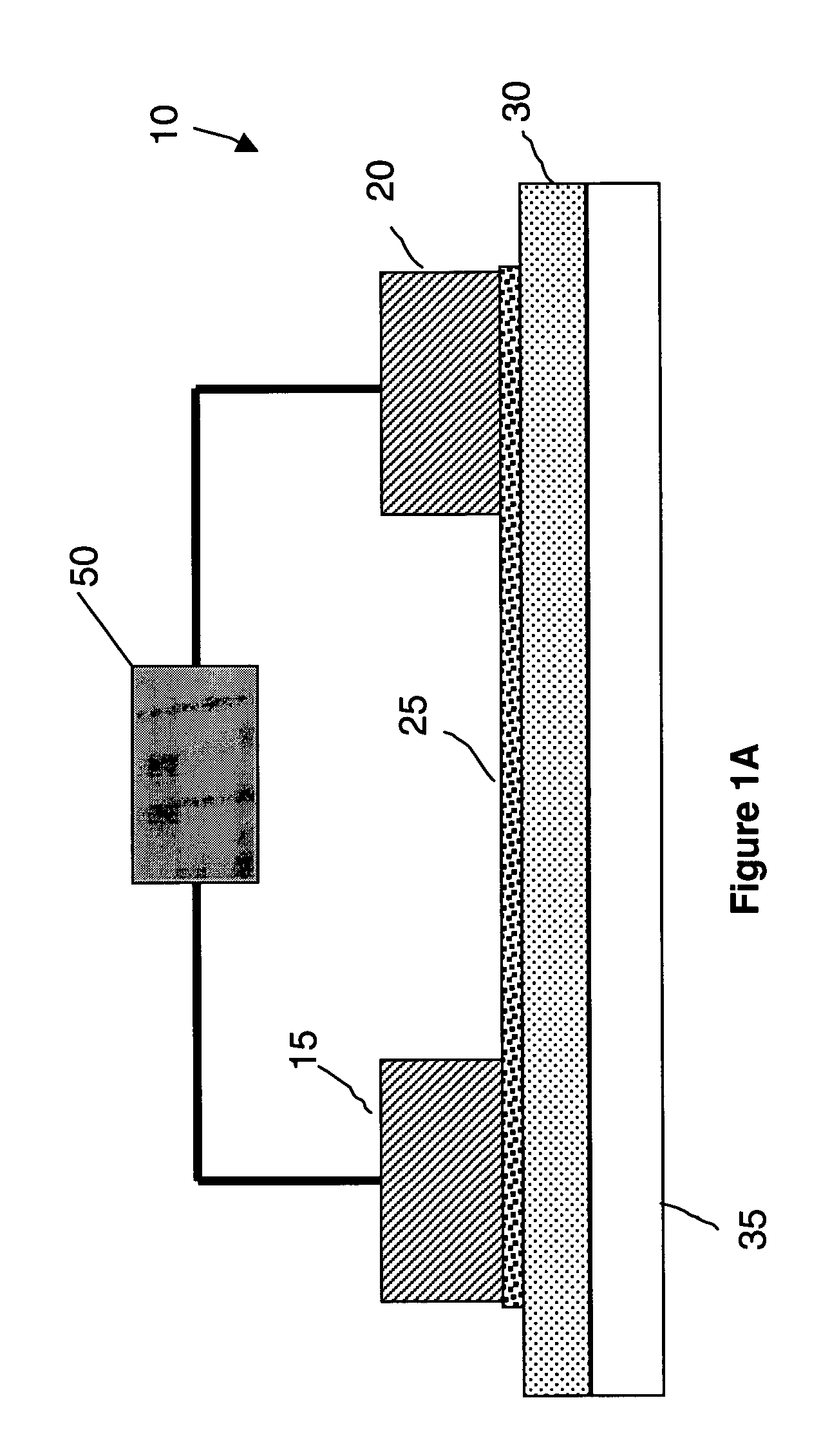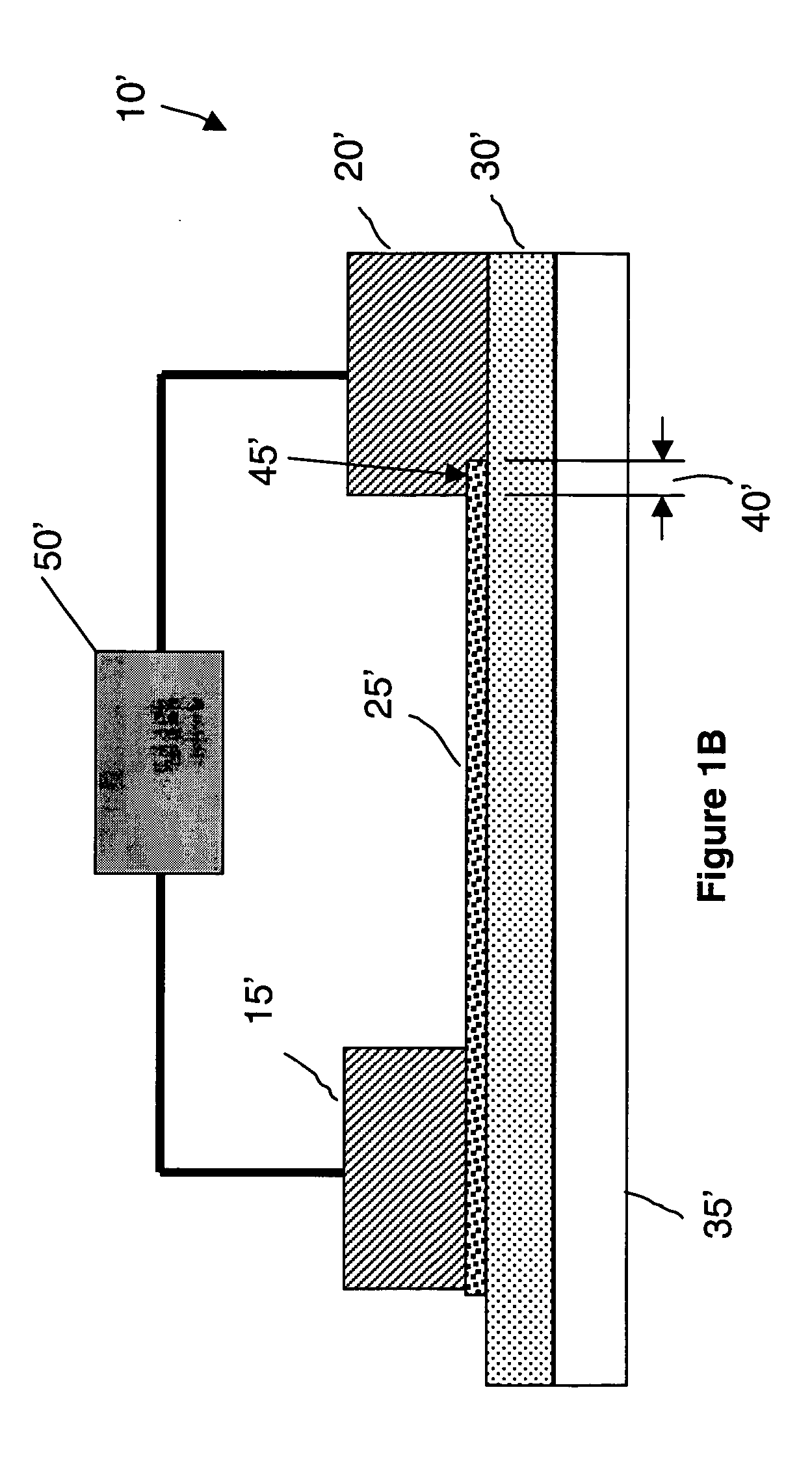Memory arrays using nanotube articles with reprogrammable resistance
a technology of reprogrammable resistance and memory array, which is applied in nanoinformatics, instruments, thermoelectric devices, etc., can solve the problems of low relative speed in comparison to dram or sram, low long-term reliability, and long write cycles (ms)
- Summary
- Abstract
- Description
- Claims
- Application Information
AI Technical Summary
Benefits of technology
Problems solved by technology
Method used
Image
Examples
Embodiment Construction
[0045] Preferred embodiments of the present invention provide scalable memory arrays that include nanotube articles with reprogrammable resistance. In general, the array includes a plurality of memory unit cells, each of which includes a cell selection transistor and a two-terminal nanotube switch, and is operably connected to a bit line, a first word line, and a second word line. The cell selection transistor is used to select the cell by applying an electrical stimulus to the transistor using the bit, first word, and / or the second word lines. The two-terminal nanotube switch is operably connected to the cell selection transistor, and is used to store the state of the memory unit cell. The two-terminal nanotube switch includes two conductive terminals and a nanotube element. The resistance between the two conductive terminals characterizes the state of the memory cell. A high resistance state can be used as a logic “0” state, and a low resistance state can be used as a logic “1” st...
PUM
 Login to View More
Login to View More Abstract
Description
Claims
Application Information
 Login to View More
Login to View More - R&D
- Intellectual Property
- Life Sciences
- Materials
- Tech Scout
- Unparalleled Data Quality
- Higher Quality Content
- 60% Fewer Hallucinations
Browse by: Latest US Patents, China's latest patents, Technical Efficacy Thesaurus, Application Domain, Technology Topic, Popular Technical Reports.
© 2025 PatSnap. All rights reserved.Legal|Privacy policy|Modern Slavery Act Transparency Statement|Sitemap|About US| Contact US: help@patsnap.com



